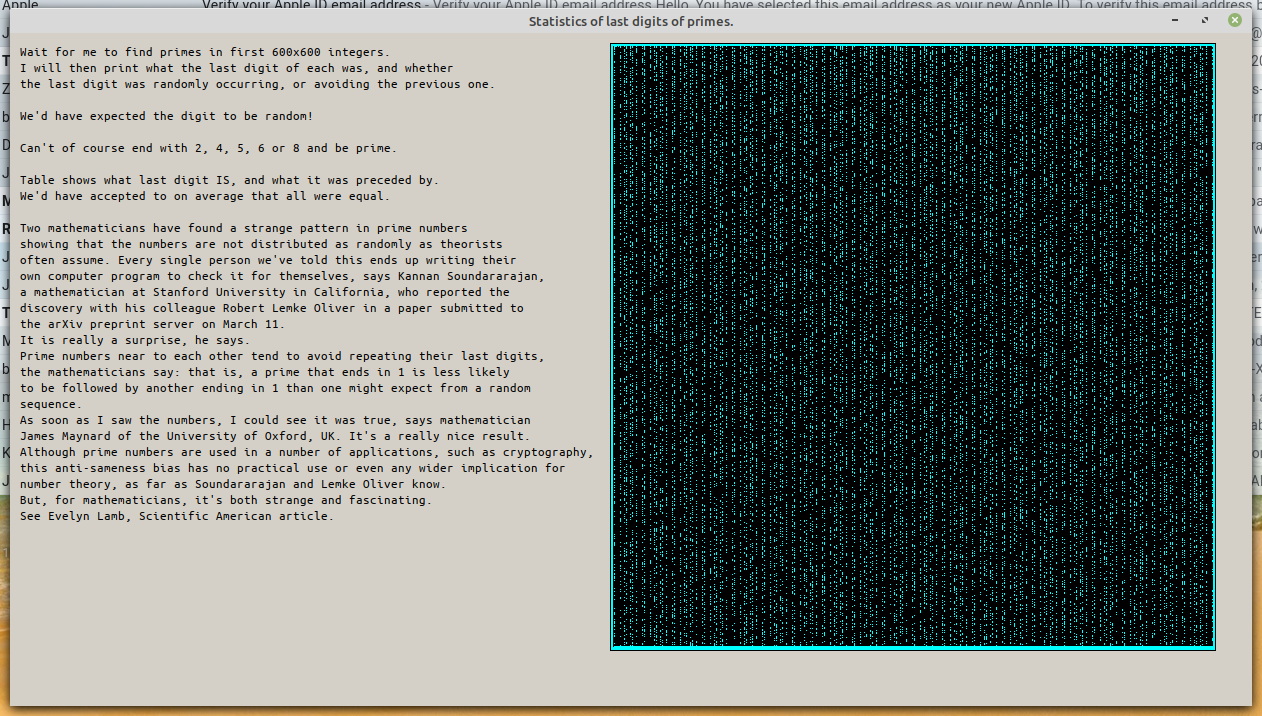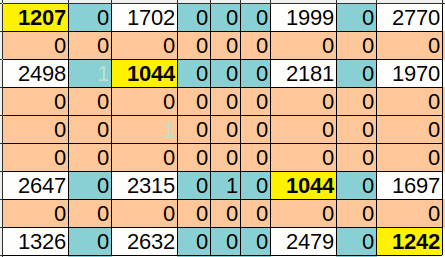Strange result in last digits of primes.
Evelyn Lamb and Scientific American drew my attention to the recently announced observation that if you consider the last digit of each successive prime number ( which must be a 1, 3, 7 or 9 after the first 2 and 5) then it 'avoids' the last digit of the previous prime.
Any mathematician /programmer immediately tries coding it to see this improbable result.
The original discoverers checked a billion digits. My code checks far fewer ( 360,000 or 1,000,000)!
Give the code time- it does a 'Sieve of Eratosthenes' first, displayed graphically on-screen...

Note how say '1' followed by '1' is far less common than '1' followed by any of '3, 7 or 9'.
Now to investigate how far down-the-line this avoidance persists!

Code
WindowWidth =1000
WindowHeight = 700
UpperLeftX = 50
UpperLeftY = 50
graphicbox #john.g2, 350, 10, 606, 610
open "Statistics of last digits of primes." for window as #john
#john "trapclose [quit]"
#john.g2 "down ; fill cyan"
topinteger =1000000
dim bin( 10, 10) ' actually need only 1, 3, 7, 9.......
[start]
dim ints( topinteger)
for j =1 to topinteger
ints( j) =1
scan
next j
for j =2 to 1 +topinteger^0.5
if ints( j) =1 then gosub [strikeout]
scan
next j
for j =2 to topinteger
if ints( j) =1 then
'print j
currLastDigit =last( j)
bin( currLastDigit, oldLastDigit) = bin( currLastDigit, oldLastDigit) +1
oldLastDigit =currLastDigit
end if
scan
next j
'data 1, 3, 7, 9
for i =1 to 9
for j =1 to 9
print bin( i, j),
next j
print ""
next i
wait
function last( j)
j$ =str$( j)
last =val( right$(j$,1))
end function
[strikeout]
call setxy, i
for k =2 *j to topinteger step j
ints( k) =0
call setxy, k
next k
return
sub setxy jf
y =int( jf /600)
x =jf -600 *y
#john.g2 "set "; 2+x; " "; 2+y
end sub
[quit]
close #john
end

